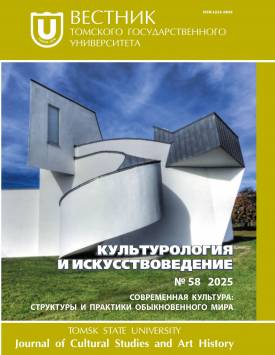Architectural composition in the museum space: conceptual series
Based on the study of museum definitions, the materialized part of the museum is currently ignored - its premises, and, consequently, the spatial component. Demonstration of exhibits, as one of the key functions of the museum, involves the placement of display and exhibition equipment in a certain space, actualizing the need to turn to architecture as the art of organizing space. The museum space consists of three key levels: exhibition equipment, the building itself and the introduction of the latter into the external environment [6]. The first level of museum space takes into account the shape, appearance and location of exhibition equipment and museum exhibits. At the second level - “building”, or museum architecture - the external (exterior) and internal (interior) frame of the museum is considered. The third level implies the contact of the museum with the external environment, which includes the architectural component of urban development of a certain style, the countryside or the natural landscape. The initial stage of design in architecture is the theory of architectural composition. There are three types of composition: frontal, volumetric and deep-spatial. To achieve artistic expressiveness of a composition, there are a number of special rules and techniques, i.e. means of architectural composition: harmony, rhythm, symmetry, asymmetry, proportion, identity, contrast, nuance, statics, dynamics. Based on the study of museum complexes, it was concluded that it is possible to use the conceptual apparatus of architectural composition to analyze the “mental movements” caused by the museum space at the level of museum architecture, i.e., the building. When reviewing the main means of architectural composition, it was concluded that harmony, rhythm, proportion, identity, contrast, nuance, symmetry, asymmetry, statics and dynamics are taken into account when analyzing compositional solutions in domestic and foreign museums. The author declares no conflicts of interests.
Keywords
museum architecture, composition, symmetry, harmony, tempoAuthors
| Name | Organization | |
| Usmanova Alina O. | Tomsk State University | lina.usmanova.94@inbox.ru |
References

Architectural composition in the museum space: conceptual series | Tomsk State University Journal of Cultural Studies and Art History. 2025. № 58. DOI: 10.17223/22220836/58/20
